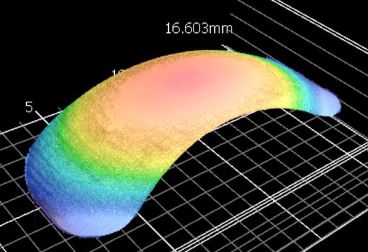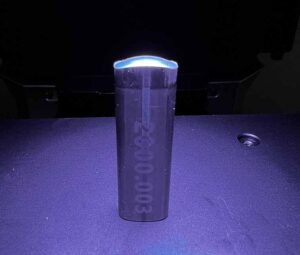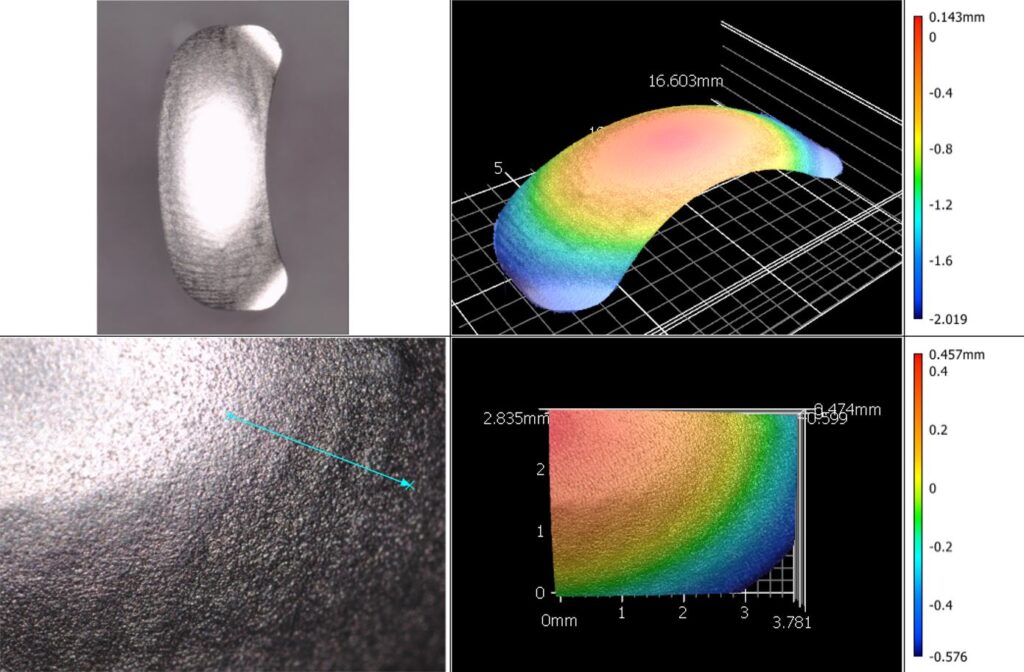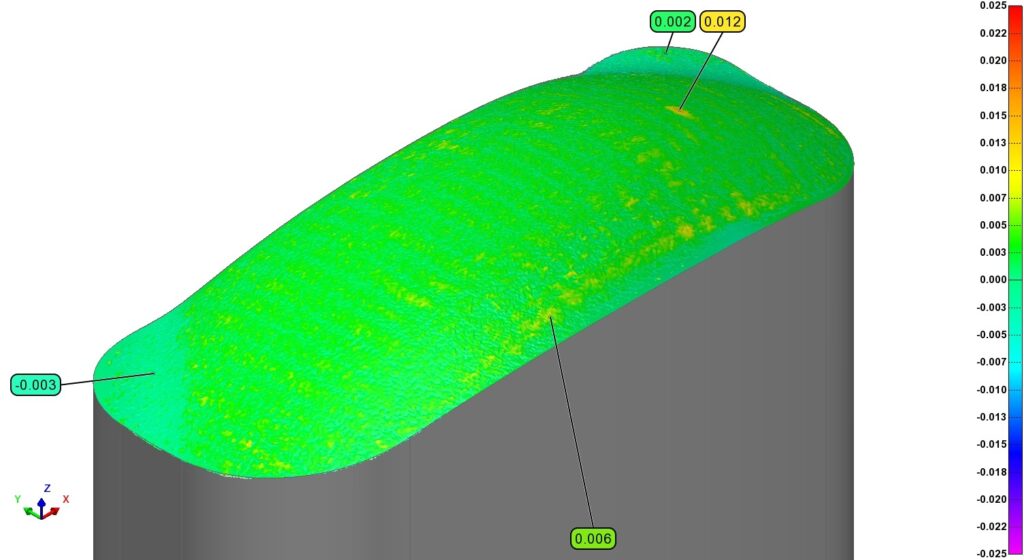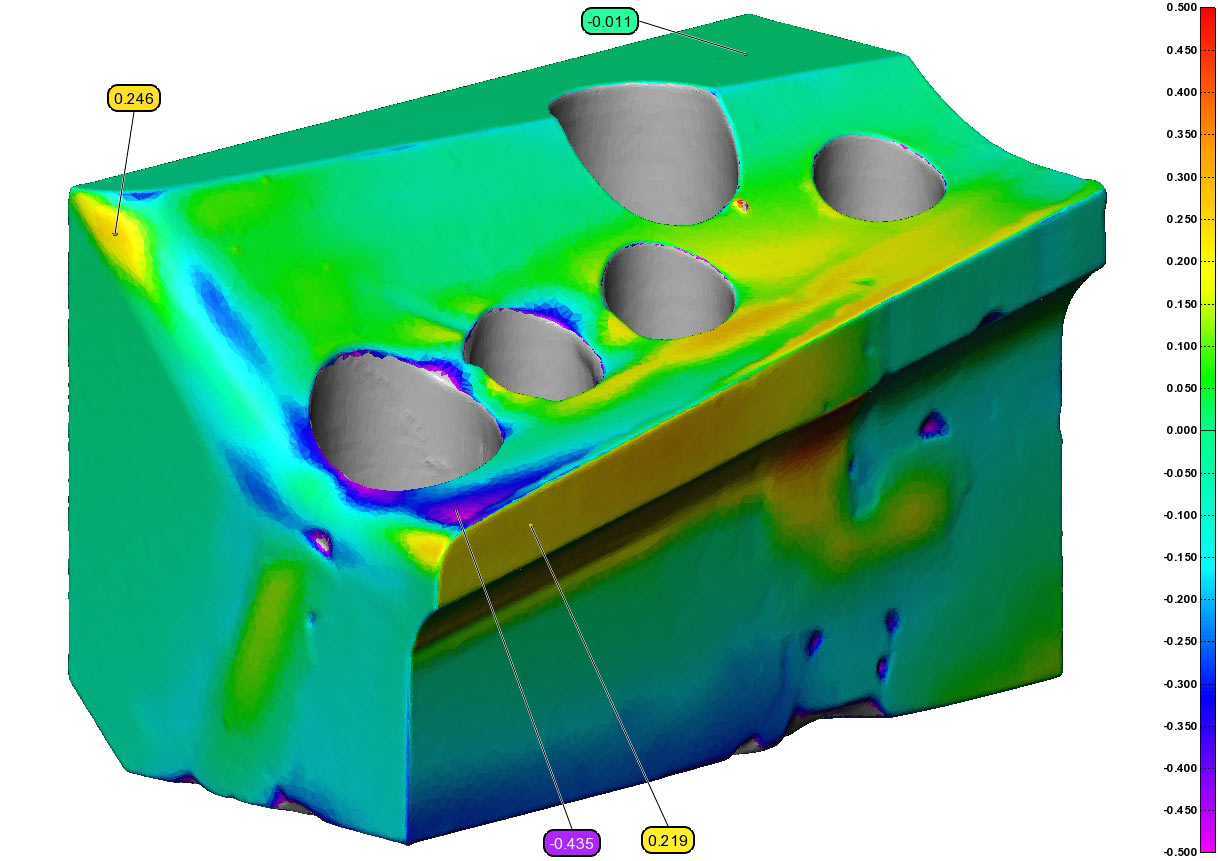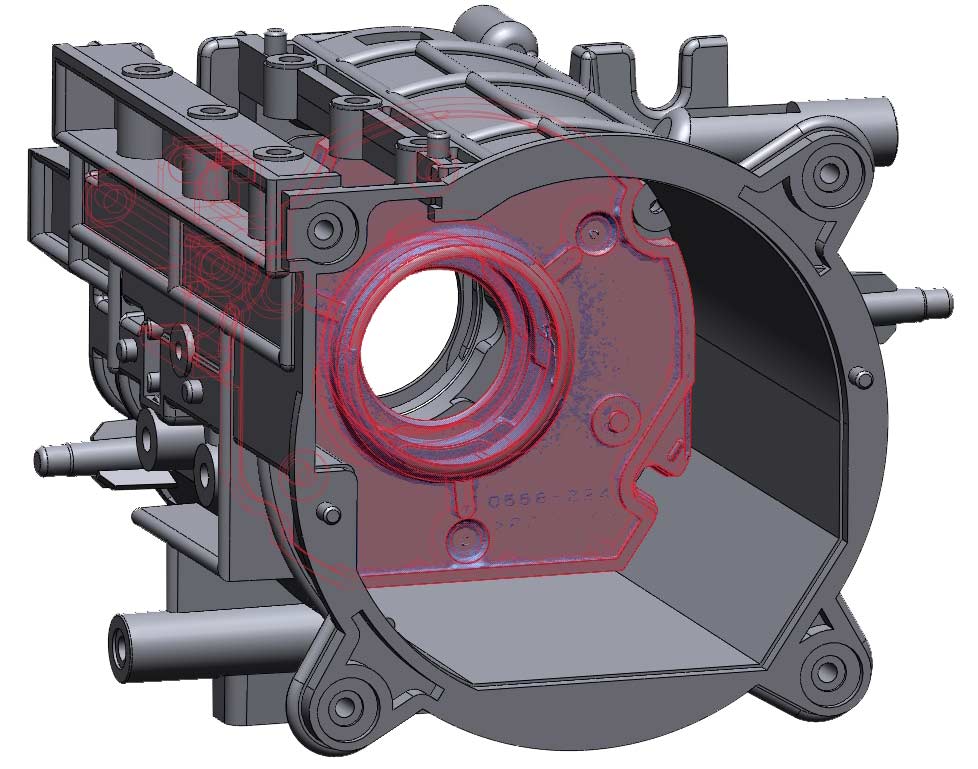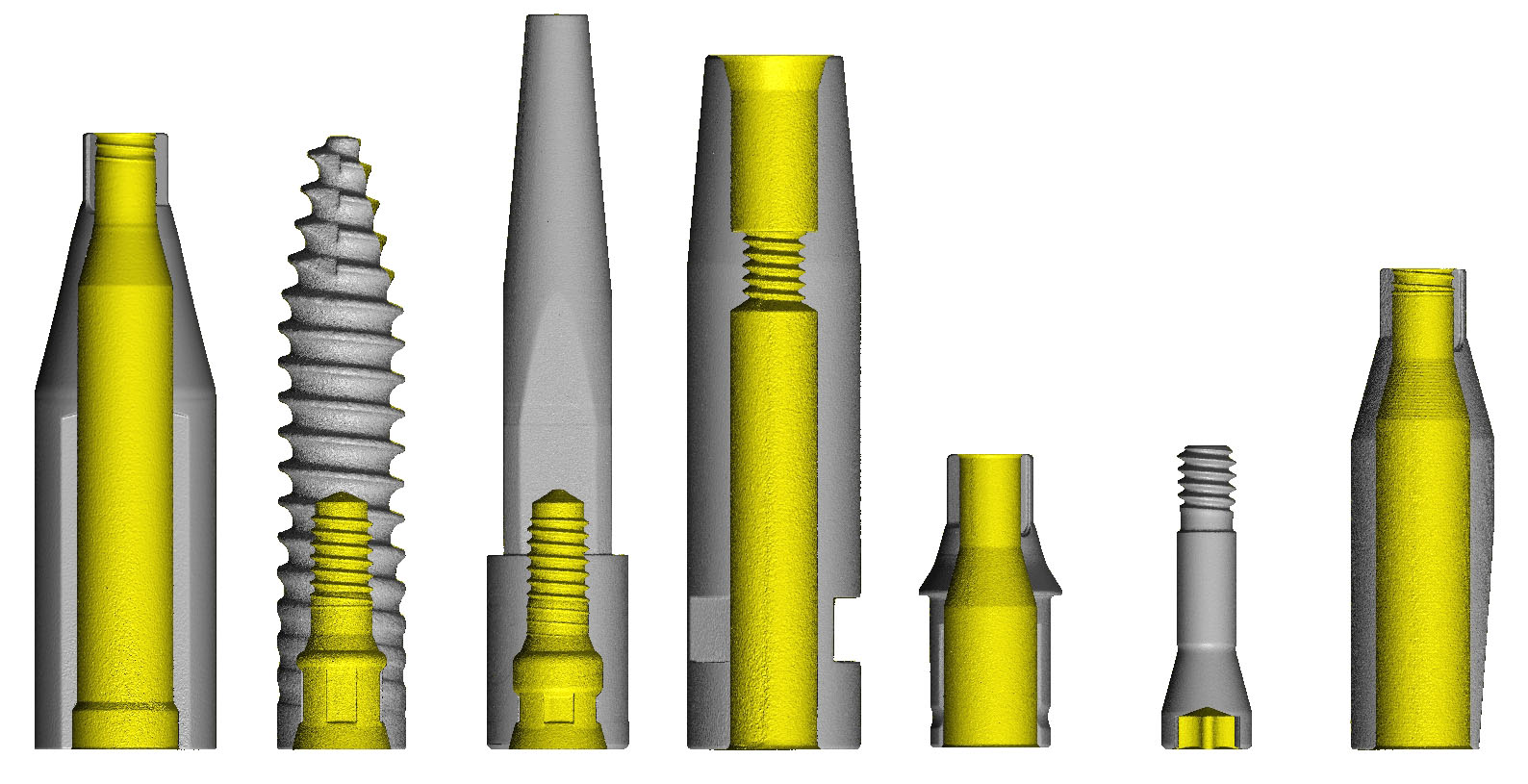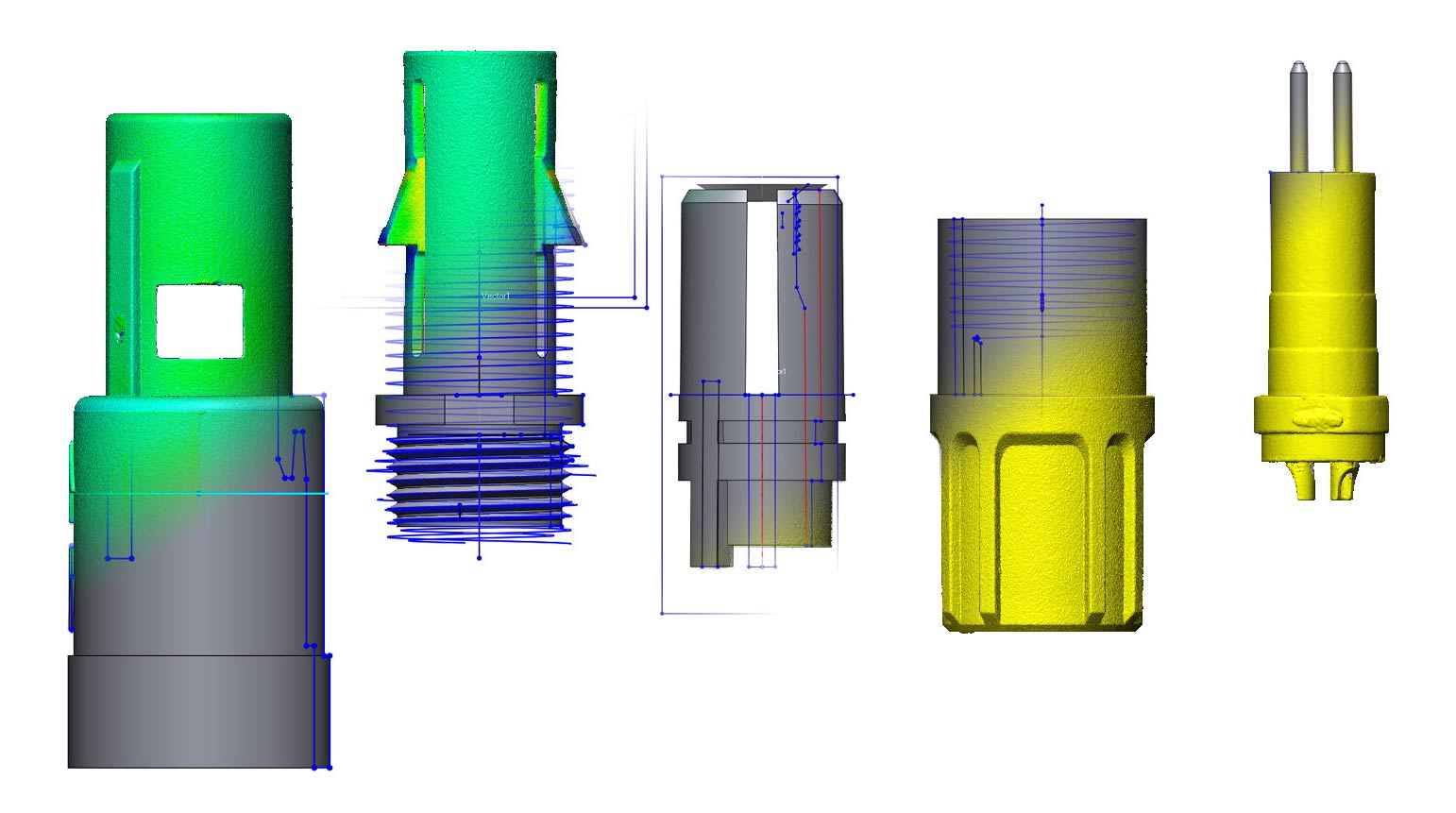Scanning & Reverse Engineering Firearm Components
REVERSE ENGINEERING FIREARM COMPONENTS
High resolution scan data acquired by our laser and CT systems is used to reverse engineer firearm components. This data can be used to modify existing hardware or build new components around historical or existing hardware.
Below is a magazine that was scanned with a 9mm round. The steps include:
- Laser scan the components
- Model the components in Geomagic relative to the laser scan
- Compare the produced model back to the scan file to ensure accuracy




CT SCANNING INTRICATE COMPONENTS
Many gun components are small and intricate. Some scanning devices may not have the resolution or ability to capture all the necessary geometry for an accurate model. CT scanning allows us to acquire surfaces like slots and assemblies without completely disassembling them. While mixed-material assemblies can be problematic (steel against plastic), there is typically a way to stage the part to get useful data.
This trigger assembly is plastic with metal springs and pins.
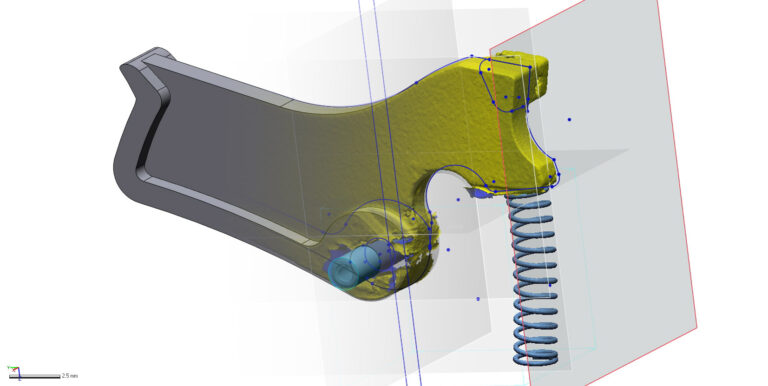
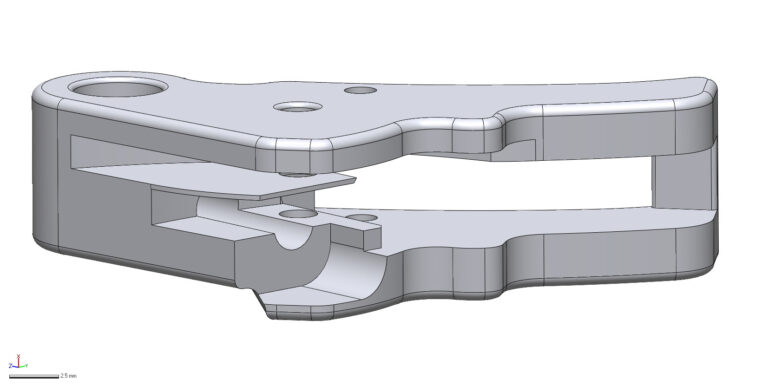

Designing New Components Around Existing Geometry
DESIGNING NEW COMPONENTS FOR PERFECT FIT AND FUNCTION
Combining the power of the world’s best scanning hardware and software allows us to produce models with incredible accuracy. This case study focuses on acquiring high resolution, water tight geometry using laser and CT scanning technologies.
This helmet has several components with attachment features for accessories like lights, visors, and earmuffs. However, if you don’t have existing CAD, how do you effectively design new products?

The first step is to acquire water tight, high resolution data. Water tight data means no data is missing in the file. This is important for properly designing a product around all scenarios – if data is missing, you can’t understand proper fit and function. We scanned and segmented the attachment points and built a coordinate system to begin modeling visor attachment mechanisms.
Below shows the 2D sketches produced in Geomagic.
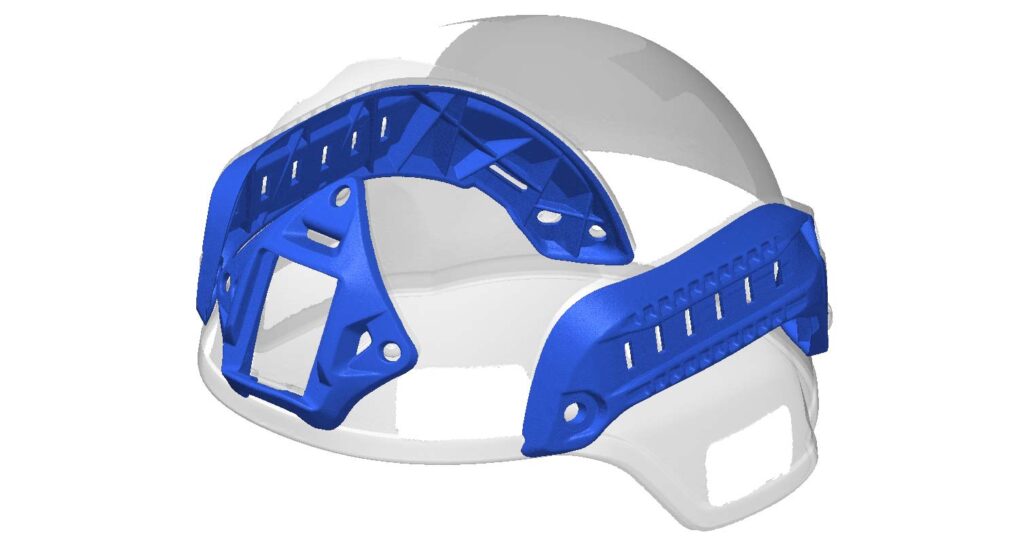
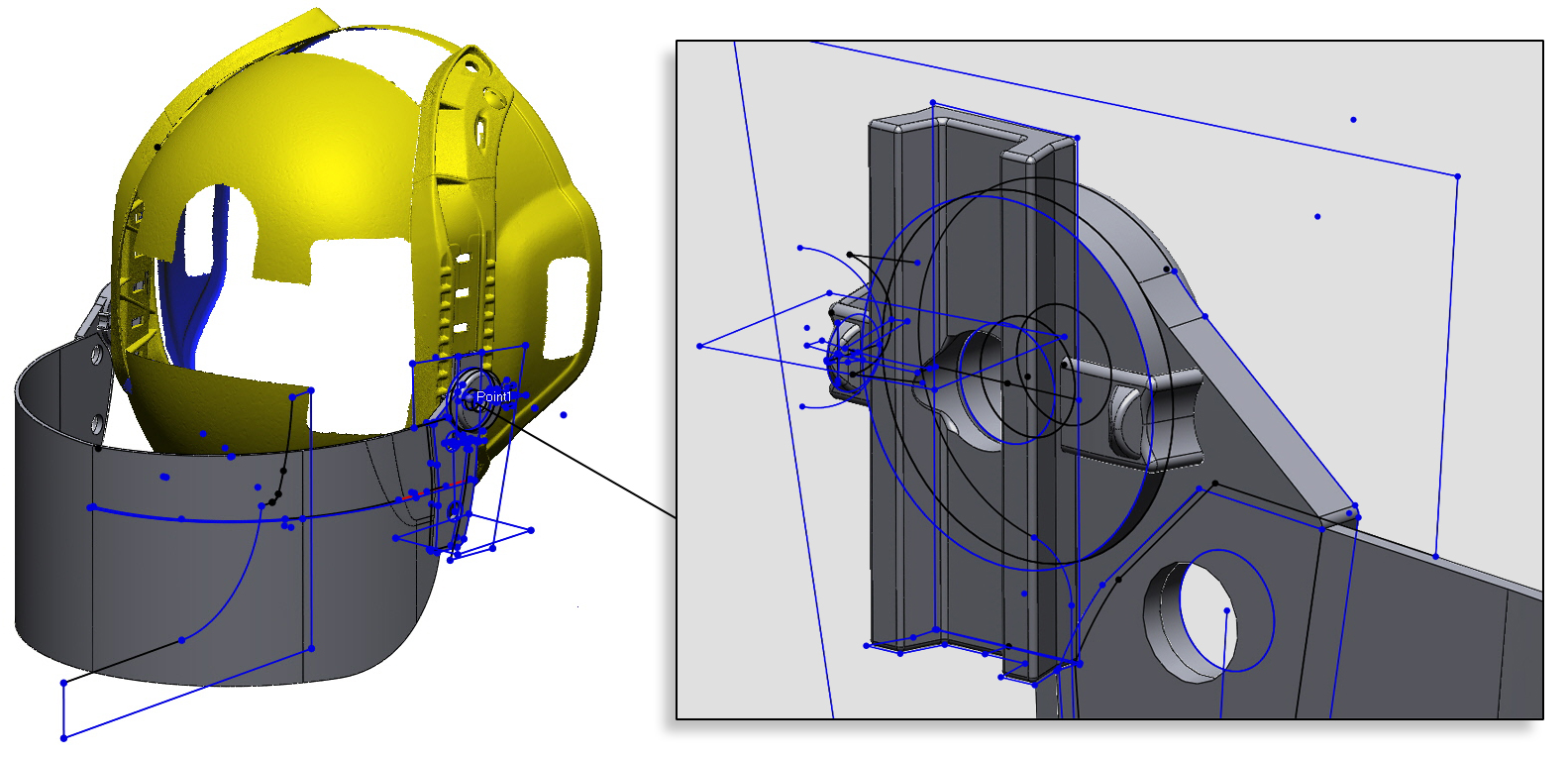
The final step of any reverse engineering project is to verify accuracy of the produced model. This verification takes the form of either Scan to CAD profile comparisons, or visual checks with 2D cross sections. The visor slides fit inside the tracks and the clips have curved tensioners to ensure tight fits into the slots.


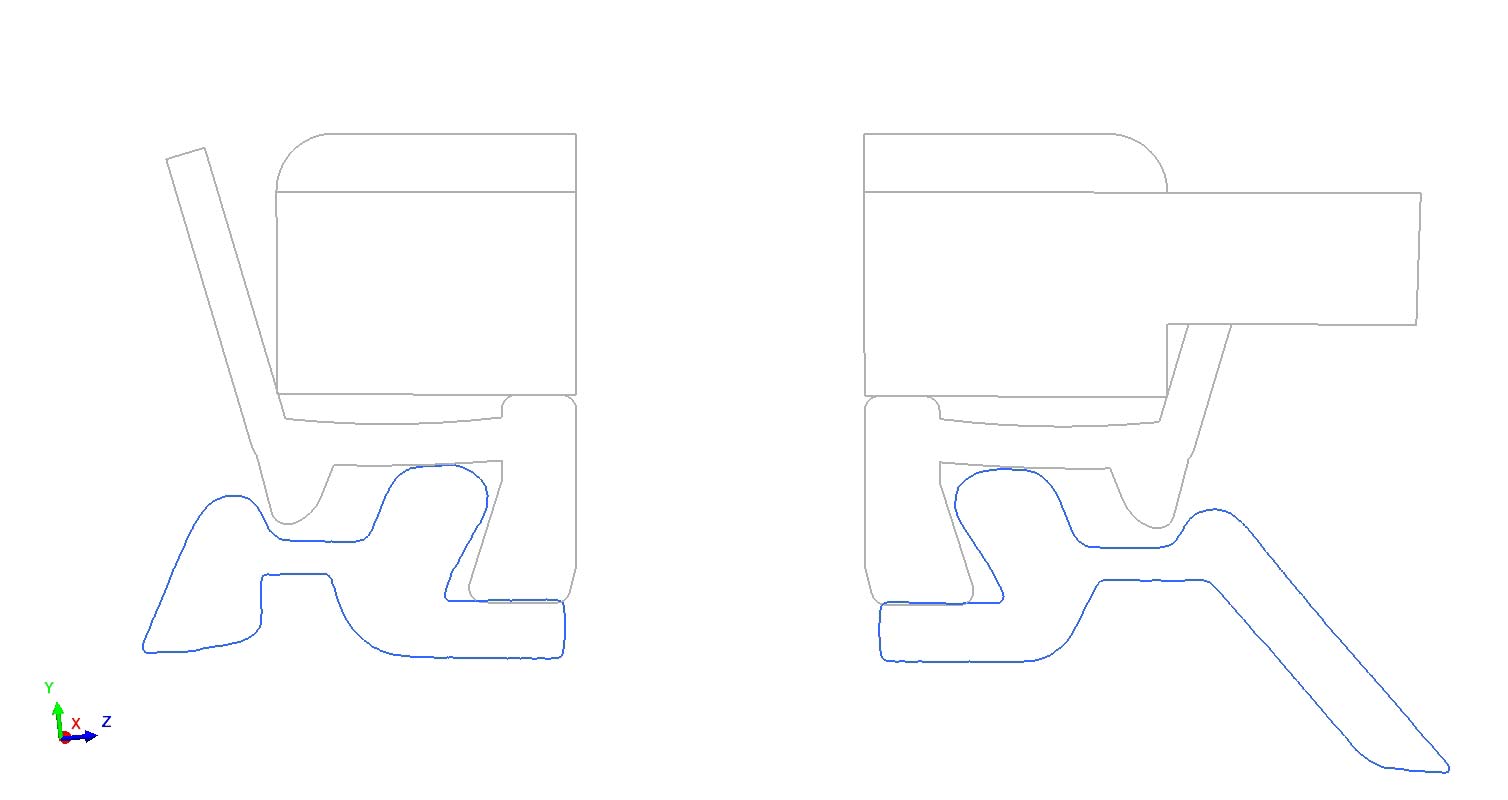
Reverse Engineering Worn Die Steels
Reverse engineering die steels
Scanning technologies are used to reverse engineer tooling die steels. Over time steel wears, breaks, or is modified to produce a better part. Design files become lost or do not match the modifications.
Using our high resolution laser pCMM we can reproduce worn die steels into toolable .step CAD models.
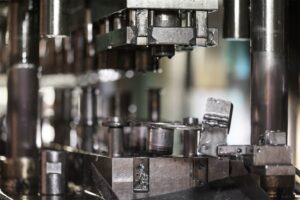
STEP 1 ACQUIRE SCAN DATA
Lorem ipsum dolor sit amet, consectetur adipiscing elit. Ut elit tellus, luctus nec ullamcorper mattis, pulvinar dapibus leo.
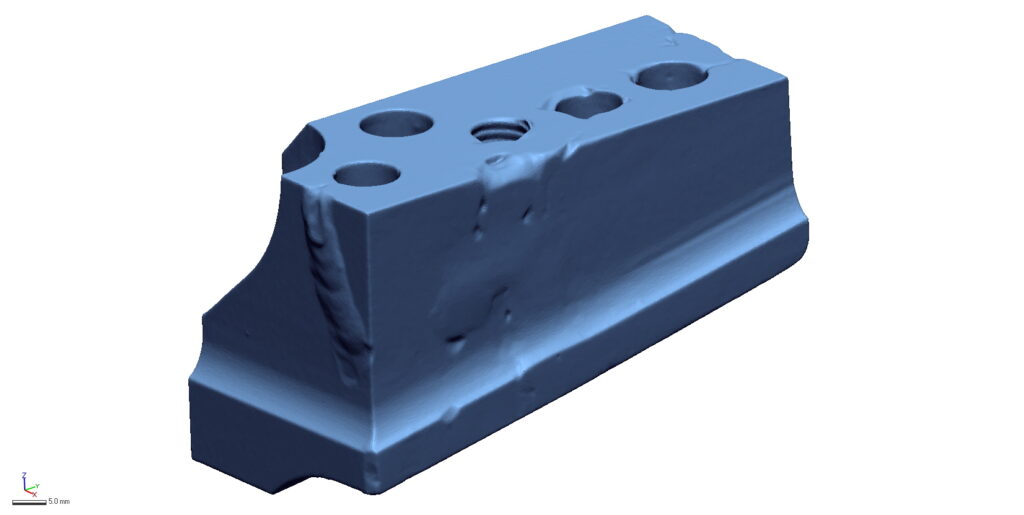
STEP 2 SKETCH THE GEOMETRY
Geomagic Design X offers a large variety of modeling tools like 2D sketching, extrusions, lofting, patterning, and symmetry.
Assets are created and merged into a solid model.
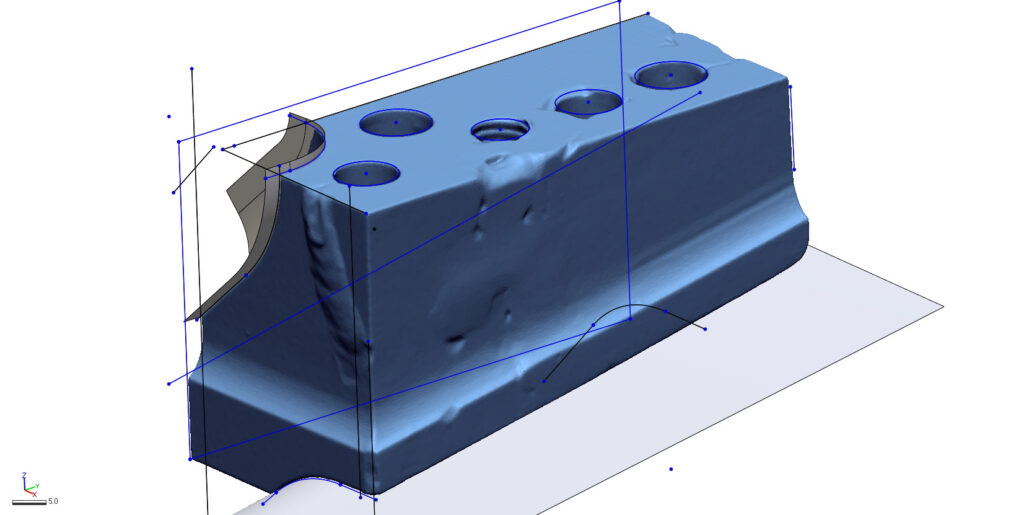
STEP 3 TUNE THE MODEL
After a model is created it is tuned to achieve the minimal amount of deviation. Sometimes surfaces need to be moved or hole sizes adjusted.
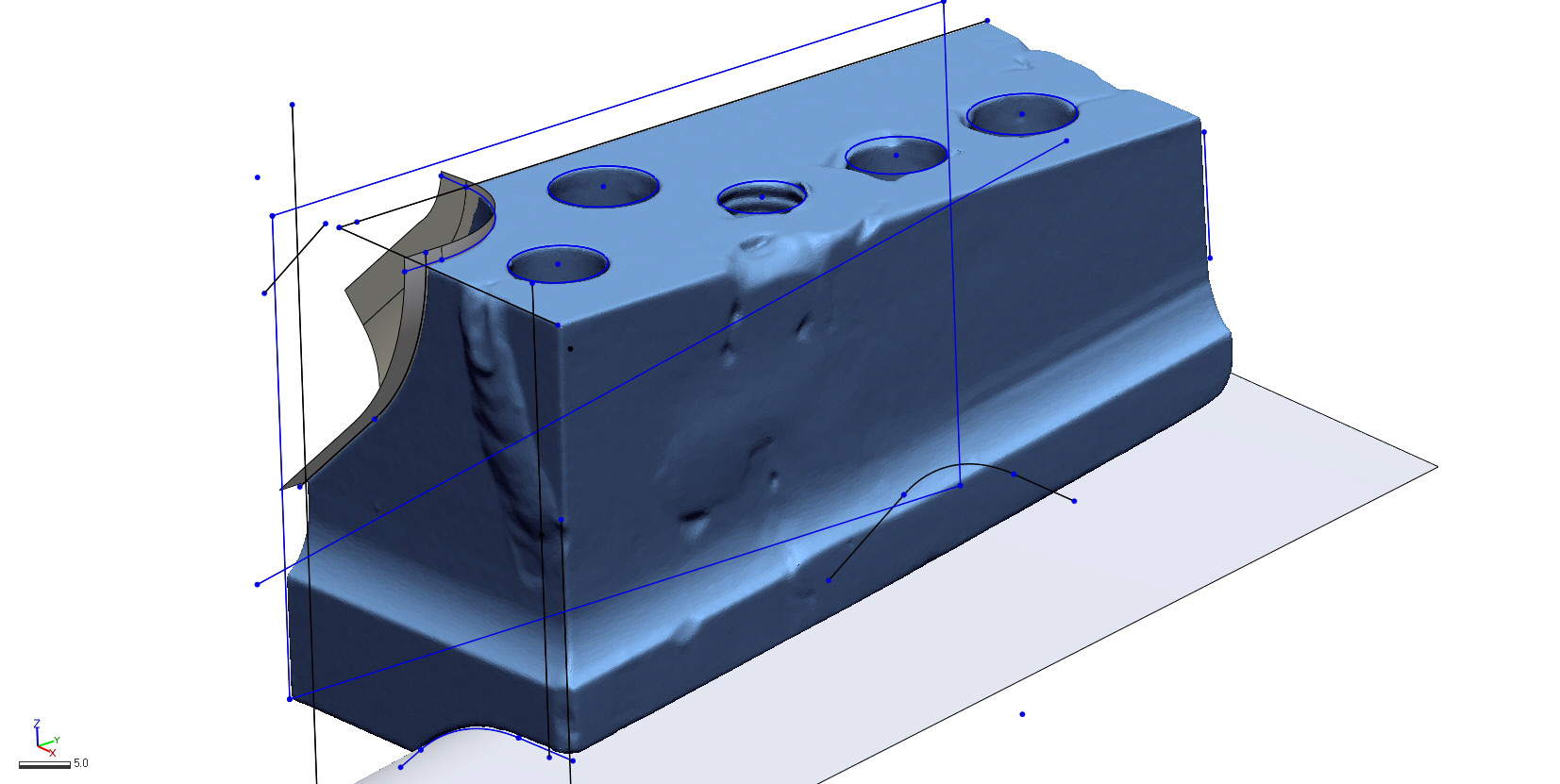

STEP 4 REPORT THE DEVIATION
The deliverables for every reverse engineering project include a final .step model as well as a deviation report. This profile heat map shows the areas where the produced model differentiates from the original scan file.
Sometimes deviation is inevitable where a cracked component was stitched back together, while other times a free-form surface cannot be perfectly geometrically replicated.

CT Scanning & Reverse Engineering Complex Assemblies
Reverse Engineering Complex Assemblies
Combining high resolution scan data from devices like our Nikon CT scanners and Hexagon Laser arms with best in class inspection softwares (PolyWorks & Geomagic Design X) allows us to reverse engineer complex component and assemblies.
This multi-material camera lens zoom housing has the makings of a very difficult and time consuming project. Within the capability of CT to produce water tight scan geometry non-destructively, several of these components would need to be sectioned to acquire all necessary geometry.
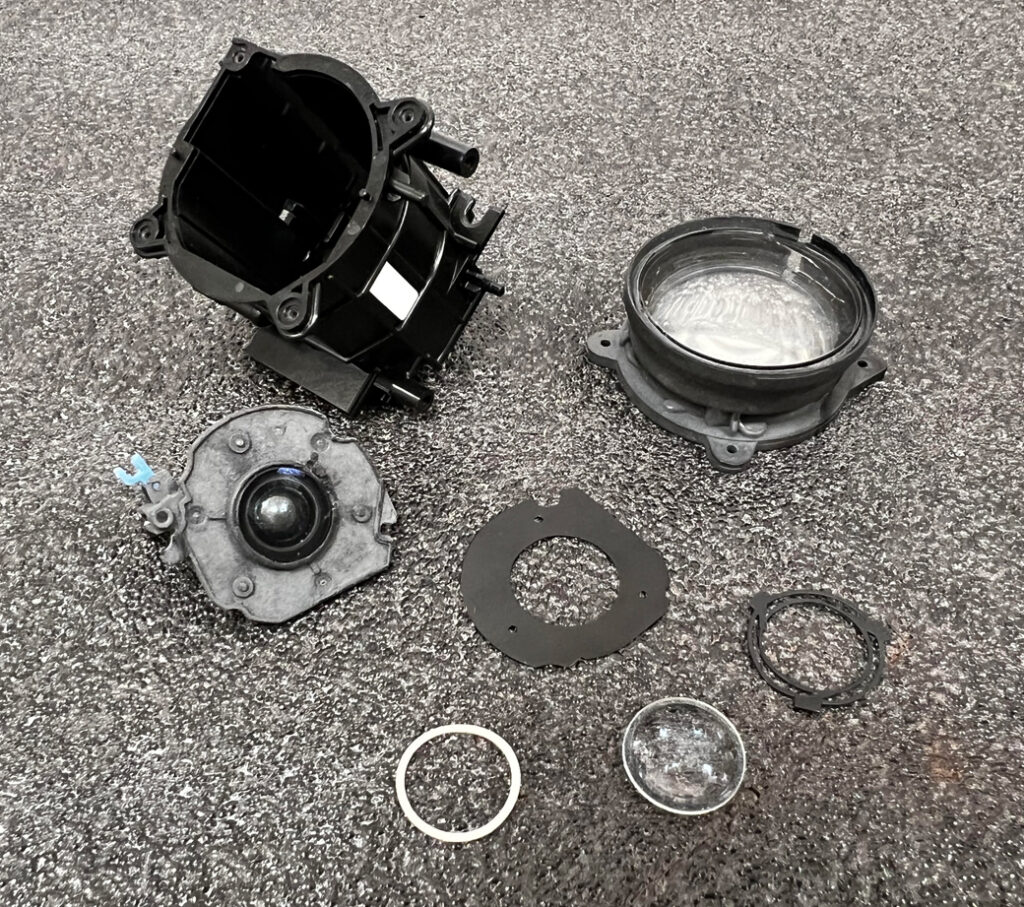
There are three steps to reverse engineering:
1. ACQUIRE DATA
Data for modeling can be acquired using several methods – at Industrial Inspection we use hand tools, laser scanners, and X-Ray & CT scanners.
2. MODEL THE DATA
Part data is aligned and then designers use Geomagic Design X to sketch and blend features and correct geometries for flatness, symmetry, and patterns.
3. VERIFY ACCURACY
PolyWorks is used to compare produced models back to original scan data for accuracy and tuning.

3D SCAN
2D SKETCHES
SOLID MODEL
Reverse engineering lenses is particularly easy using CT technology. No spray is required like with surface scanners, and there is no noise caused by the part transparency.
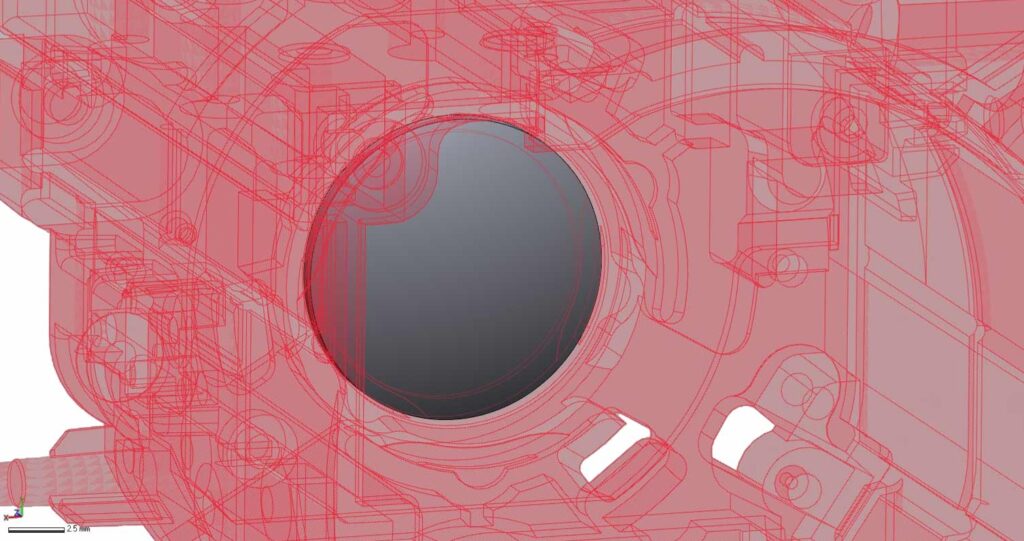
One technique for modeling complex assemblies is to scan everything in the assembled state, disassemble everything, rescan the individual components, and then refit those components back to the assembly scan. This ensures everything is aligned properly and mitigates material interference so that all geometries can be modeled.
We also can use profiles from one component as a guide for additional components to minimize factors like rattling. For example, we used the ID profile of this housing as the same profile of the OD of the lens guide, ensuring a perfect fit.
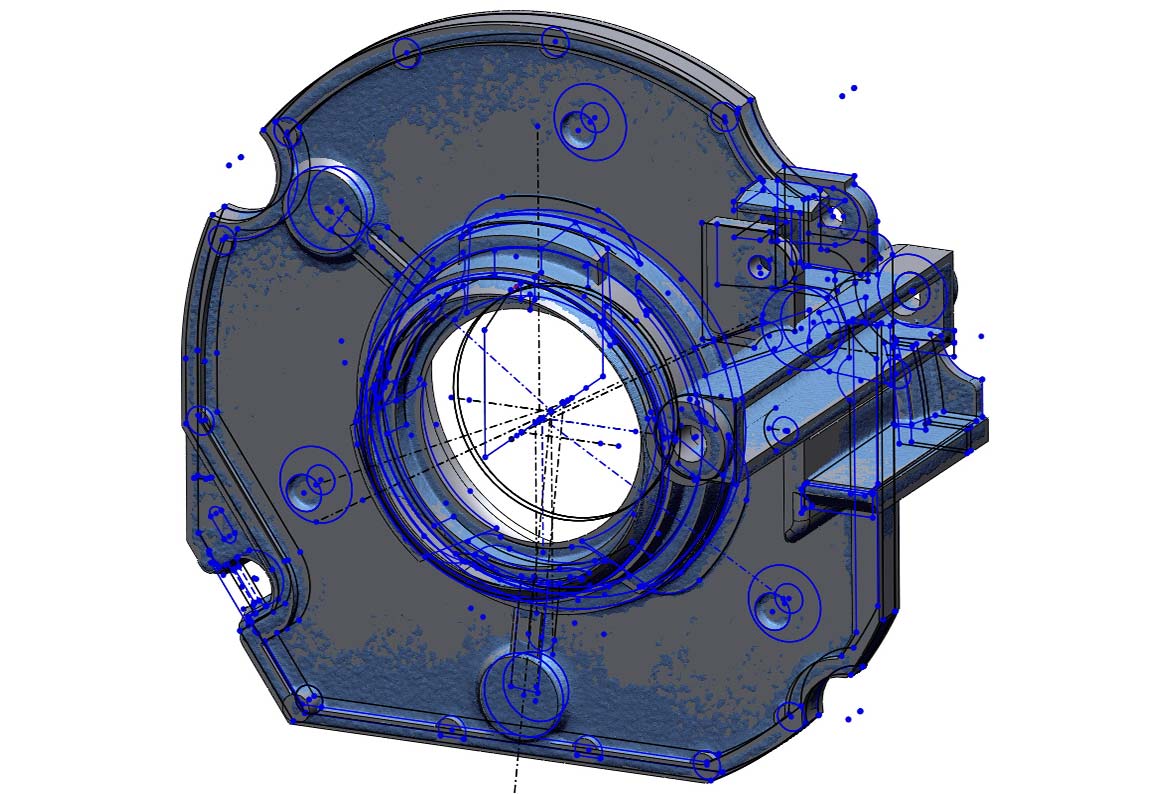
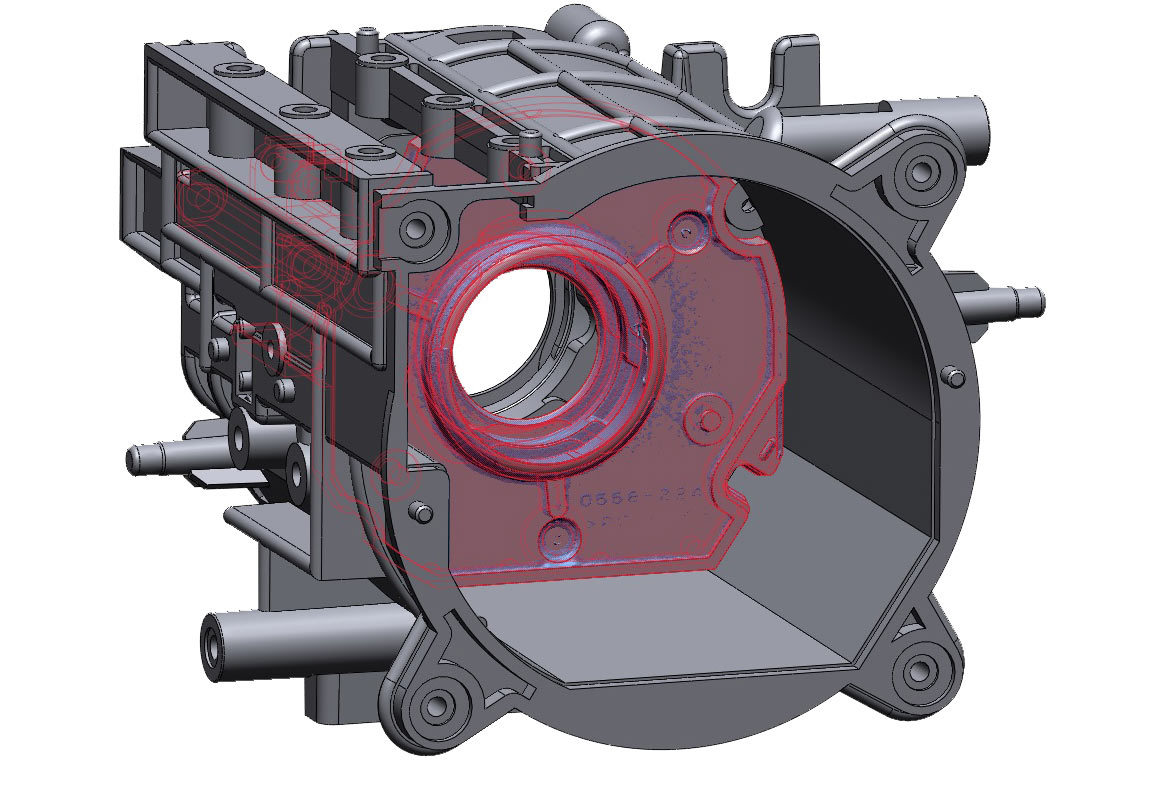
Scan to CAD profile comparisons are the critical last step of any reverse engineering job. The color coded heat map shows which surfaces are high, low, or out of position compared to the scan data. With this information the model can be tuned to an acceptable level of deviation. A report of this deviation is provided alongside the model at the end of the project.
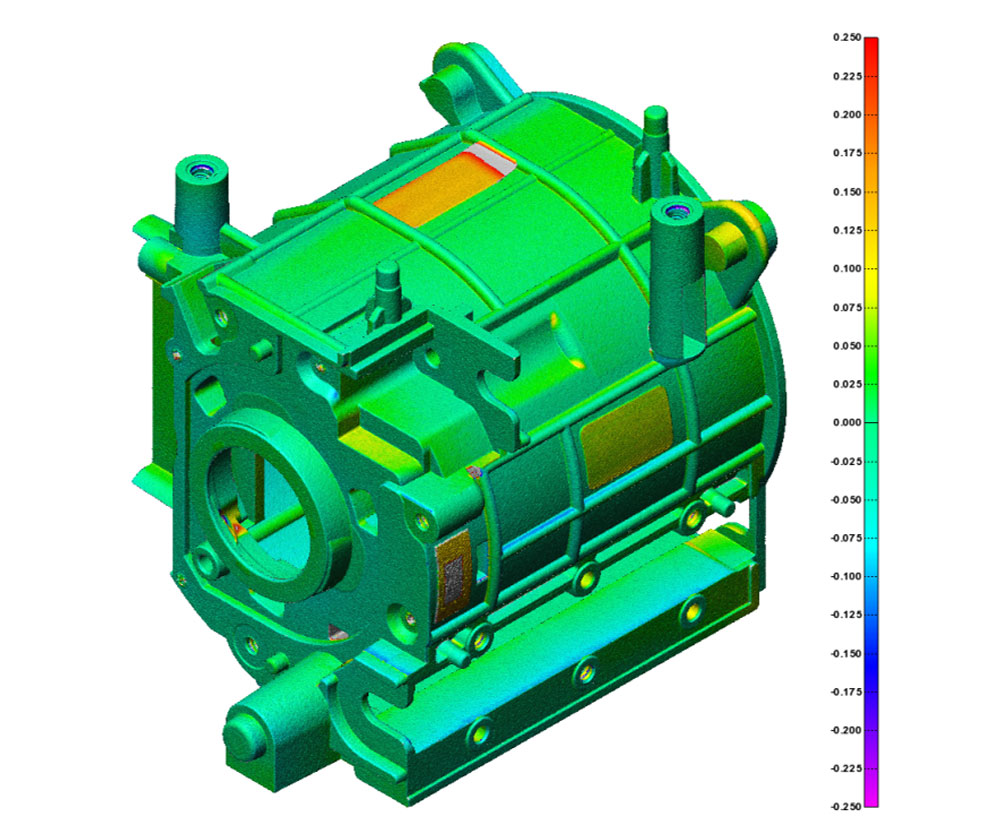
Reverse Engineering Components for Fit & Function
Reverse Engineering Components for Perfect Fit & Function
We combine exceptional technologies like CT scanning and modeling and inspection softwares to re-create perfect fit and function components. For example, these gaskets were worn and cracked and the client was unable to find replacement parts. Scanning just the casting or gaskets alone would not be adequate.
Instead, we CT scanned all three components and virtually aligned them to ensure no critical design intent was missed.



Using Geomagic Design X’s silhouette cross sectioning feature allows us to model these gaskets using the full profile of a line even though the gaskets aren’t perfectly flat. We then use the center points of the casting to ensure bolts pass through with no interference. Then, we extrude the design cross section to the exact width of the gaskets.
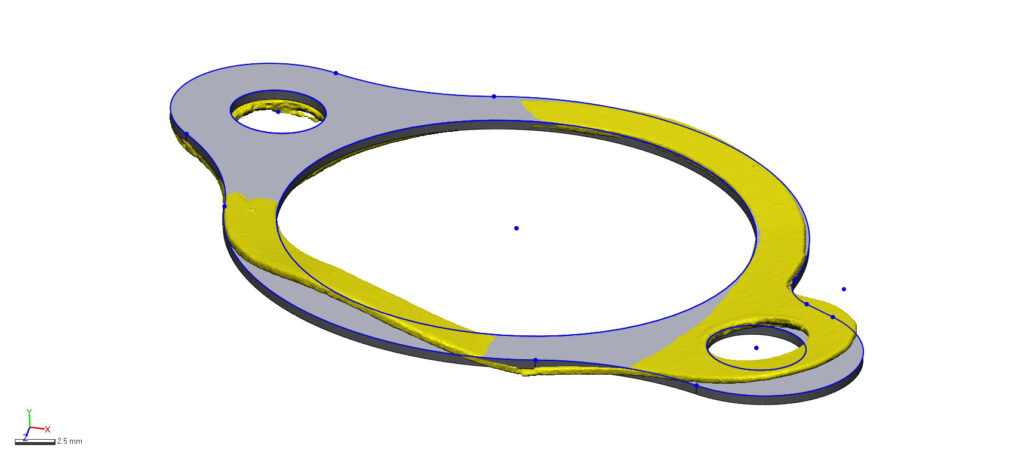
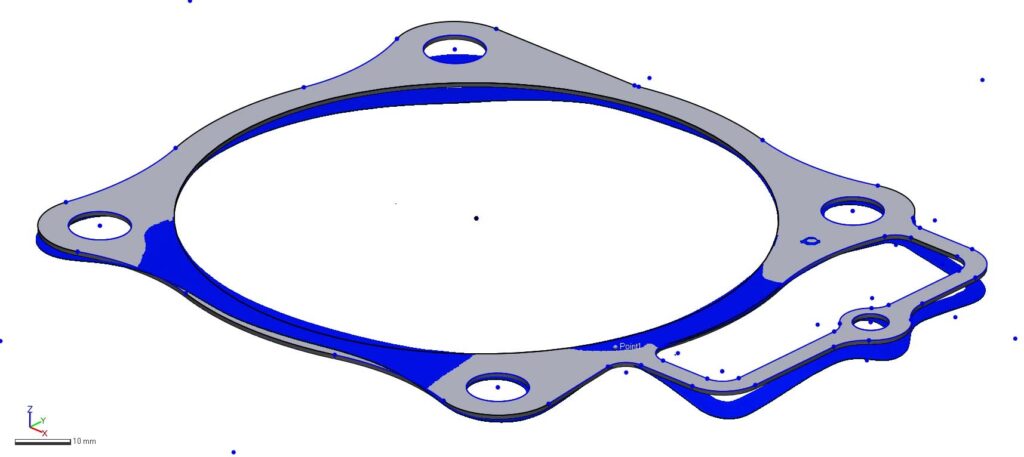
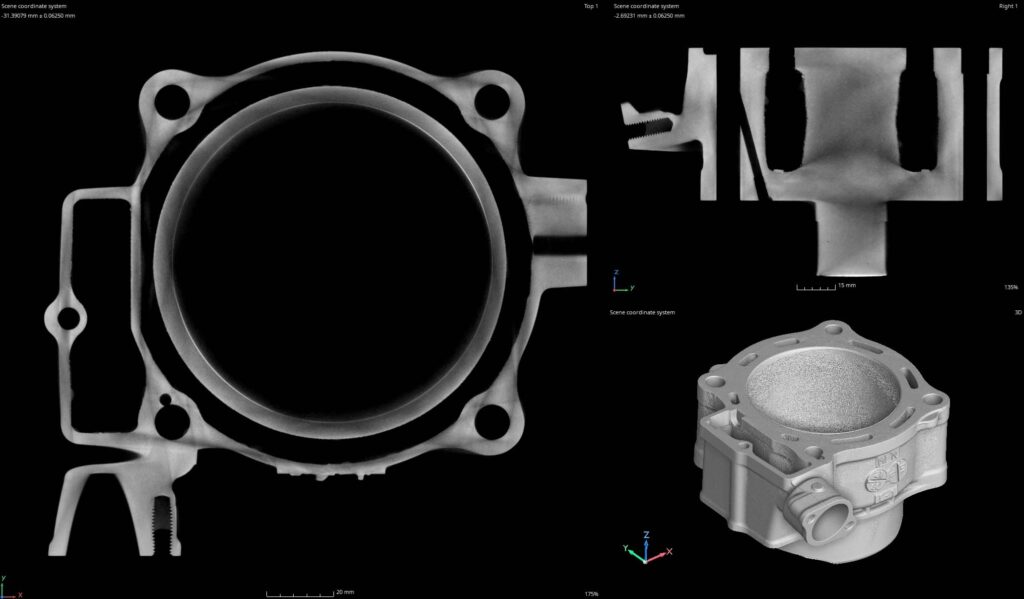
Inspecting Surgical Screws using Industrial CT Scanning
CT SCANNING IMPLANT SCREWS FOR INSPECTION & REVERSE ENGINEERING
Microfocus CT scanning is used to produce high resolution, water tight scan files of implant screws for a variety of reasons including:
- Non-destructive evaluation – ensuring products are free of contaminants and flaws like cracks
- Dimensional evaluation – ensuring products meet design specifications like profile and concentricity
- Reverse engineering – manufacturers may need accurate models of products to design their own geometry
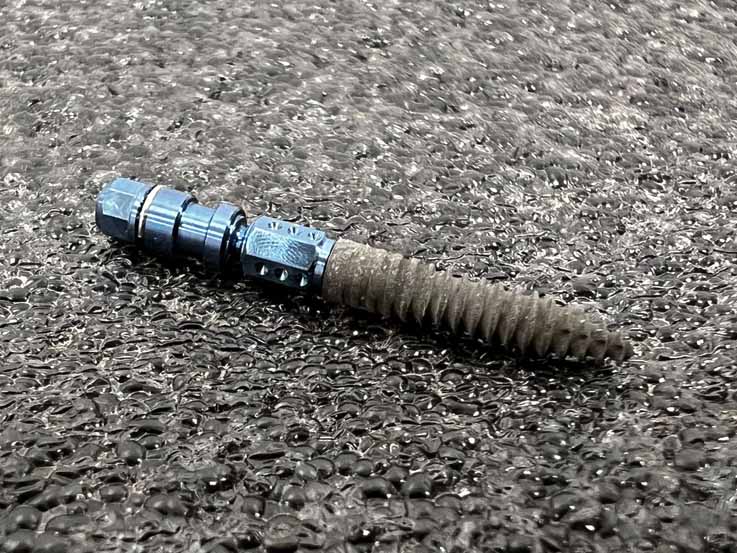


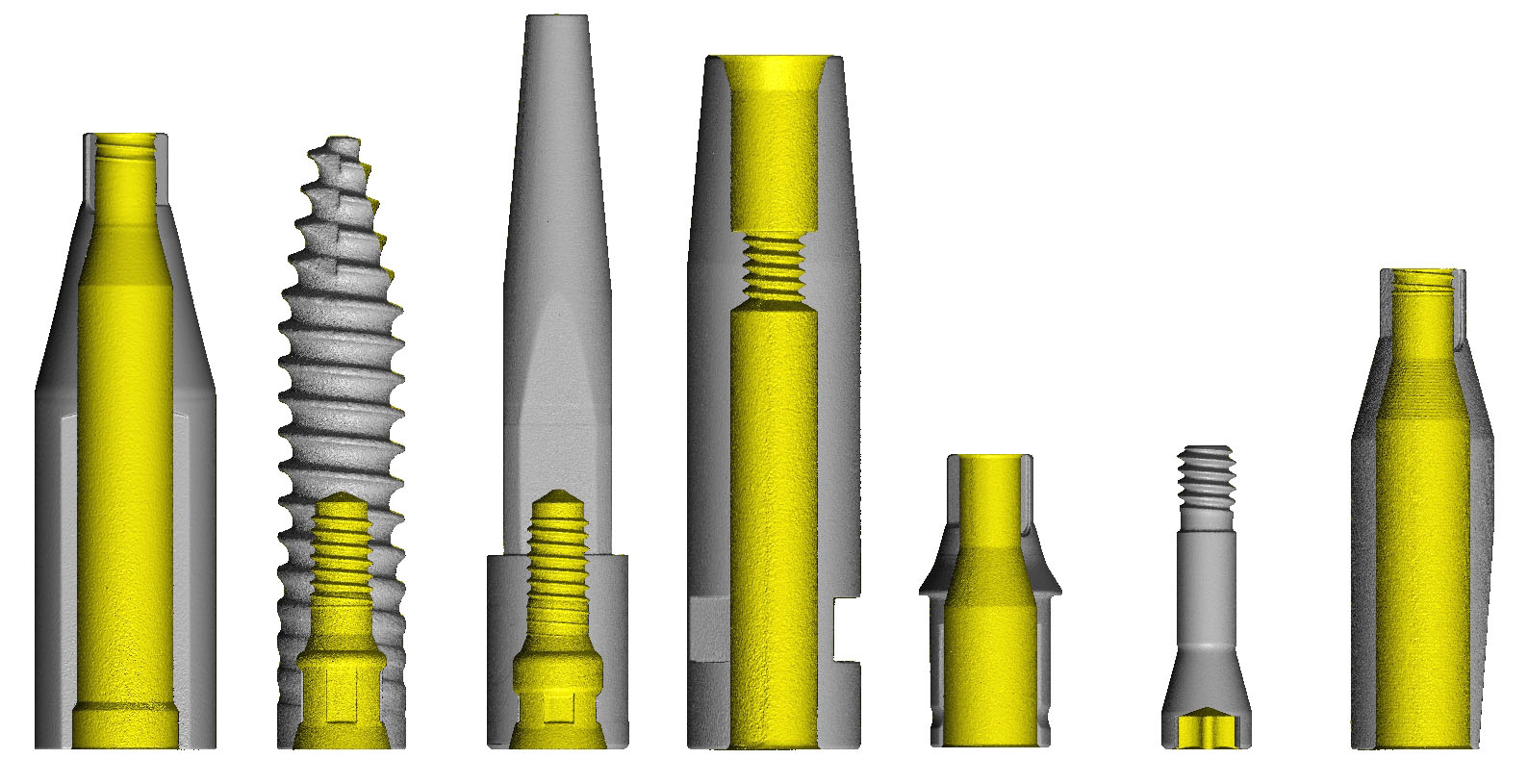
CT SCANNING FOR REVERSE ENGINEERING
The sample to the left has been reverse engineered to a toolable .STEP model. The screw was CT scanned, exported to .STL, and then modeled in Geomagic Design X.

Reverse Engineering Workflow
With advanced technologies we turn physical parts into digital formats including .stl & .step.
Continue reading
